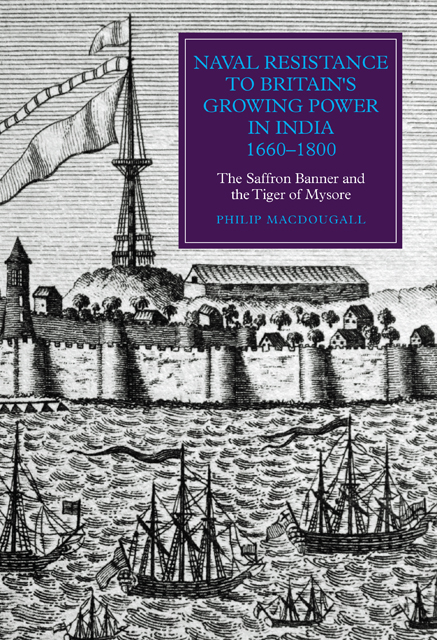 Naval Resistance to Britain's Growing Power in India, 1660–1800
Naval Resistance to Britain's Growing Power in India, 1660–1800 Book contents
- Frontmatter
- Contents
- List of Illustrations
- Abbreviations
- Chronology
- Maps
- Preface
- Part I Early Naval Resistance: The Historical Background
- Part II The Saffron Banner: Irregular Naval Warfare against an Emergent Britain
- Part III The Tiger of Mysore: A Conventional Navy to Oppose British Dominance
- Conclusion
- Bibliography
- Index
- Worlds of The East India Company
8 - Port Louis, Isle de France: The Grand Arsenal
Published online by Cambridge University Press: 23 February 2023
- Frontmatter
- Contents
- List of Illustrations
- Abbreviations
- Chronology
- Maps
- Preface
- Part I Early Naval Resistance: The Historical Background
- Part II The Saffron Banner: Irregular Naval Warfare against an Emergent Britain
- Part III The Tiger of Mysore: A Conventional Navy to Oppose British Dominance
- Conclusion
- Bibliography
- Index
- Worlds of The East India Company
Summary
I also learn that one frigate was ready for sea at the Isle de France, and another fitting out, which were meant to convey to the Malabar Coast the volunteers who had been enrolled to serve with Tipoo.
George, 1st Earl Macartney, governor and president of Madras, to William, 3rd Earl of Mornington
Tipu Sultan, as a result of his decision to develop a blue-water navy underpinned by an expanding mercantile economy, had become the single greatest potential threat to the presence of the British in Asia prior to the Indian mutiny of 1857. Reinforcing this threat were various moves on the part of Tipu to form alliances not just with a number of Muslim states that included Persia and the Ottoman Empire but also with France under Louis XVI and later the Directory. If such alliances had evolved and prospered, the possibility of the EIC or the British government clinging on to India would have proved remote to the extreme.
The French, who were the most accommodating in their willingness to work with Tipu, were the late comers to the sub-continent, not establishing permanent trading links with India until the late seventeenth century. As with their British and Dutch rivals, the French also formed a trading company with monopoly rights and the authority to directly govern territories acquired. Often referred to in English as the French East India Company, the Compagnie française pour le commerce des Indes orientales established a number of factories, the first of these at Surat in 1668, followed by more extensive areas that it governed as colonies. Among the latter was Pondichéry (Puducherry), acquired from the Sultan of Bijapur in 1673, which became the administrative capital of the Compagnie française in India and its largest possession. All were vulnerable to British attack and each eventually fell to the EIC during periods of hostility, although subsequent treaties often saw French possessions returned. Pondichéry, for instance, was captured and razed to the ground by the British in 1761 but was returned to the French four years later as a result of a peace treaty brokered in Europe. It again fell to the British in 1778 and 1793 before a final return to the French at the end of the Napoleonic Wars.
- Type
- Chapter
- Information
- Naval Resistance to Britain's Growing Power in India, 1660–1800The Saffron Banner and the Tiger of Mysore, pp. 167 - 191Publisher: Boydell & BrewerPrint publication year: 2014


